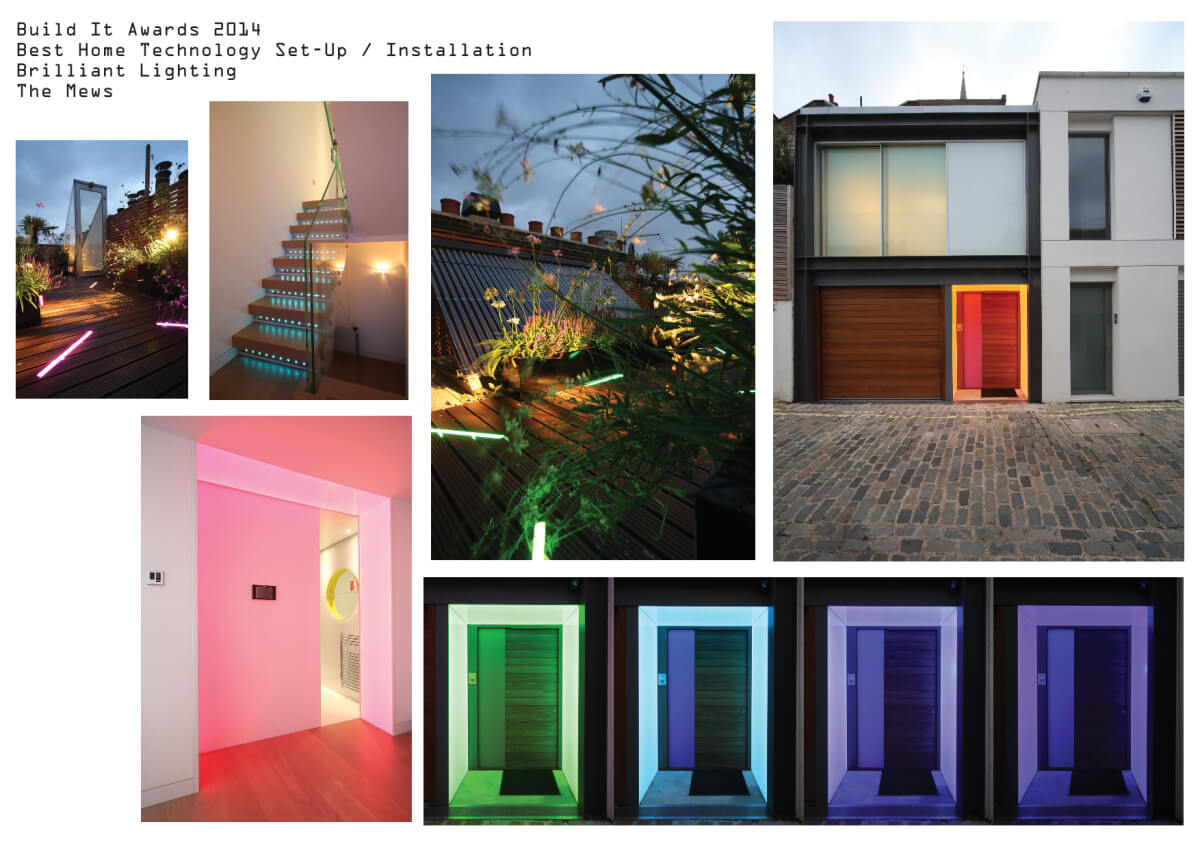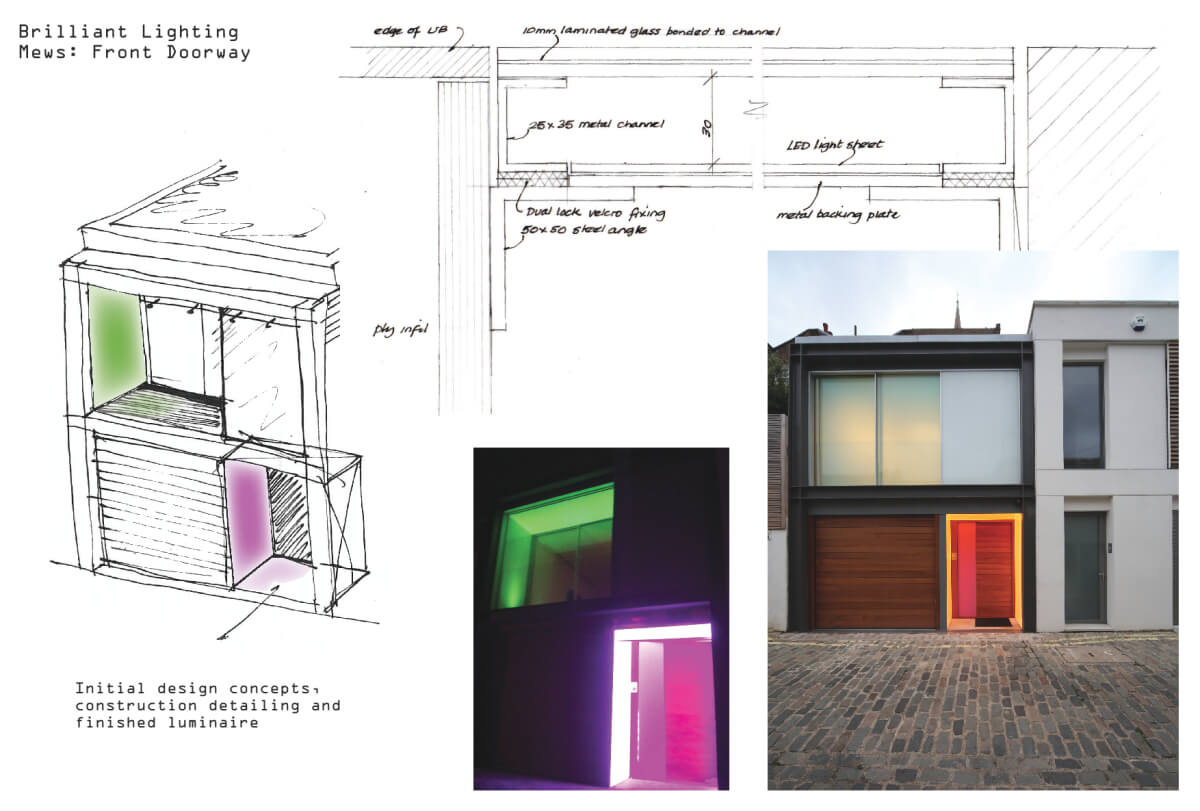Lighting design concepts – a lighting case study
We’ve recently published a case study on lighting a Georgian townhouse and contemporary mews. In this post we’re going to have a look at what goes into a lighting design like this particular project. We’ll look at how the initial designs for a space translate into lighting design concepts. We’ll then look at how those early lighting design concepts get realised into finished results.

This isn’t a blueprint on how to get the specific results in this project. All projects are individual. Hopefully though, it will show how to get the most of using a residential lighting designer and explain a bit more about what a lighting designer does.
Lighting design concepts – the mews frontage
Lighting design flows from a real understanding of how the architecture and space is going to work. We were fortunate both to be involved very early and also have an enthusiastic and supportive architect. The lighting for the mews was visualised at a very early stage. Early architect’s sketches of the frontage show the glass boxes for the studio and entrance. It was always envisioned that these would each encompass three glass walls. The idea of making these glass boxes colour-changing was made at our first meeting.

The upper “box” closes. It’s masked by a sliding glass panel and we jointly took the decision to use floor-recessed LED fittings to provide colour when open.
The entrance box however is always visible. We specified LED LightSheet to give us the effect we were looking for. The LightSheet used for the entrance is made-to-measure, creating an even tunnel of light programmed to cycle through a range of colours.

Turning lighting design concepts into reality
Achieving this sort of effect requires close co-operation between the design and construction teams. The tolerances are extremely tight and the architectural detailing has to be very precise.
The cabling for the fittings and drivers were layered onto the CAD drawings. The specification schedule provided precise information to the electrical team about what needed to go where. The construction details were developed with and approved by the architect. Turning lighting design concepts into reality is a team effort. It’s because of these inter-relationships that we prefer to be involved early. It makes for smoother projects and better results.

This project is shortlisted in the Build It Awards 2014.


